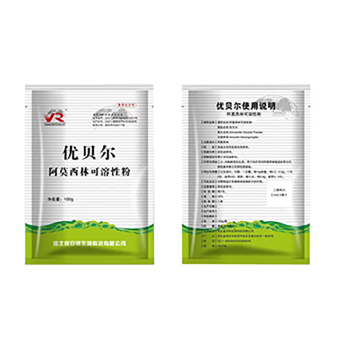- Afrikaans
- Albanian
- Amharic
- Arabic
- Armenian
- Azerbaijani
- Basque
- Belarusian
- Bengali
- Bosnian
- Bulgarian
- Catalan
- Cebuano
- Corsican
- Croatian
- Czech
- Danish
- Dutch
- English
- Esperanto
- Estonian
- Finnish
- French
- Frisian
- Galician
- Georgian
- German
- Greek
- Gujarati
- Haitian Creole
- hausa
- hawaiian
- Hebrew
- Hindi
- Miao
- Hungarian
- Icelandic
- igbo
- Indonesian
- irish
- Italian
- Japanese
- Javanese
- Kannada
- kazakh
- Khmer
- Rwandese
- Korean
- Kurdish
- Kyrgyz
- Lao
- Latin
- Latvian
- Lithuanian
- Luxembourgish
- Macedonian
- Malgashi
- Malay
- Malayalam
- Maltese
- Maori
- Marathi
- Mongolian
- Myanmar
- Nepali
- Norwegian
- Norwegian
- Occitan
- Pashto
- Persian
- Polish
- Portuguese
- Punjabi
- Romanian
- Russian
- Samoan
- Scottish Gaelic
- Serbian
- Sesotho
- Shona
- Sindhi
- Sinhala
- Slovak
- Slovenian
- Somali
- Spanish
- Sundanese
- Swahili
- Swedish
- Tagalog
- Tajik
- Tamil
- Tatar
- Telugu
- Thai
- Turkish
- Turkmen
- Ukrainian
- Urdu
- Uighur
- Uzbek
- Vietnamese
- Welsh
- Bantu
- Yiddish
- Yoruba
- Zulu
8 月 . 12, 2024 20:30 Back to list
Exploring the Efficacy and Safety of Intramuscular Amoxicillin Injection in Treating Infections
Amoxicillin Intramuscular Injection A Comprehensive Overview
Amoxicillin is a widely used antibiotic belonging to the penicillin group, effective against a broad spectrum of bacterial infections. Its intramuscular injection form is particularly significant in clinical settings, providing rapid absorption and therapeutic efficacy. In this article, we will explore the pharmacological aspects, indications, administration, potential side effects, and considerations surrounding amoxicillin intramuscular injection.
Pharmacology of Amoxicillin
Amoxicillin works by inhibiting the synthesis of bacterial cell walls, leading to cell lysis and death. Its broad-spectrum activity makes it effective against a range of Gram-negative and Gram-positive bacteria, including strains of Streptococcus, Staphylococcus, and Escherichia coli. Unlike some other antibiotics, amoxicillin maintains stability in the presence of gastric acid, allowing for both oral and parenteral forms of administration.
Indications for Use
The intramuscular injection of amoxicillin is commonly indicated for various bacterial infections, including
1. Respiratory Tract Infections It is often used to treat pneumonia and bronchitis, especially in cases where oral administration is not feasible. 2. Skin and Soft Tissue Infections Effective against cellulitis and other skin infections, amoxicillin is administered when oral options are inadequate or when faster action is needed. 3. Otitis Media Commonly indicated for middle ear infections, especially in pediatric patients who might have difficulty swallowing pills. 4. Urinary Tract Infections While often treated with oral antibiotics, severe UTIs may require parenteral therapy.
Administration
Intramuscular administration of amoxicillin is typically performed in a clinical setting under sterile conditions. The medication must be injected into a large muscle, such as the deltoid or gluteal muscle, to ensure appropriate absorption and minimize discomfort. The dosage depends on the severity of the infection, patient age, and renal function. Healthcare professionals must follow established protocols for dosages and observe the patient for any immediate adverse reactions.
amoxicillin intramuscular injection

Side Effects
While generally well-tolerated, amoxicillin intramuscular injection can cause side effects, including
- Local Reactions Pain, swelling, or irritation at the injection site are common and usually transient. - Allergic Reactions Some patients might experience allergic reactions ranging from rash and itching to anaphylaxis. A thorough medical history should be taken to identify any previous allergies to penicillin or related compounds. - Gastrointestinal Issues Nausea, vomiting, and diarrhea may occur due to alterations in gut flora; probiotics are sometimes recommended to mitigate these effects. - Superinfection Prolonged use can lead to the potential overgrowth of resistant organisms, resulting in secondary infections.
Considerations for Use
Before administering amoxicillin intramuscularly, a comprehensive assessment is crucial. Clinicians should evaluate the patient's medical history for any contraindications, particularly previous hypersensitivity to penicillin or cephalosporin antibiotics. Renal function should also be assessed, as dosage adjustments may be necessary for individuals with kidney impairment.
Additionally, it's essential to consider the drug interactions that may occur with concurrent medications. Patients on anticoagulants or those with a history of liver disease may require closer monitoring.
Conclusion
Amoxicillin intramuscular injection is a vital therapeutic option in the treatment of various bacterial infections, offering quick absorption and effective results. While it boasts a favorable safety profile, vigilance is necessary to manage potential adverse effects and to ensure appropriate patient selection. As resistance to antibiotics continues to challenge healthcare providers, judicious use of compounds like amoxicillin remains crucial in combating infections and improving patient outcomes.
-
The Power of Radix Isatidis Extract for Your Health and Wellness
NewsOct.29,2024
-
Neomycin Sulfate Soluble Powder: A Versatile Solution for Pet Health
NewsOct.29,2024
-
Lincomycin Hydrochloride Soluble Powder – The Essential Solution
NewsOct.29,2024
-
Garamycin Gentamicin Sulfate for Effective Infection Control
NewsOct.29,2024
-
Doxycycline Hyclate Soluble Powder: Your Antibiotic Needs
NewsOct.29,2024
-
Tilmicosin Premix: The Ultimate Solution for Poultry Health
NewsOct.29,2024













